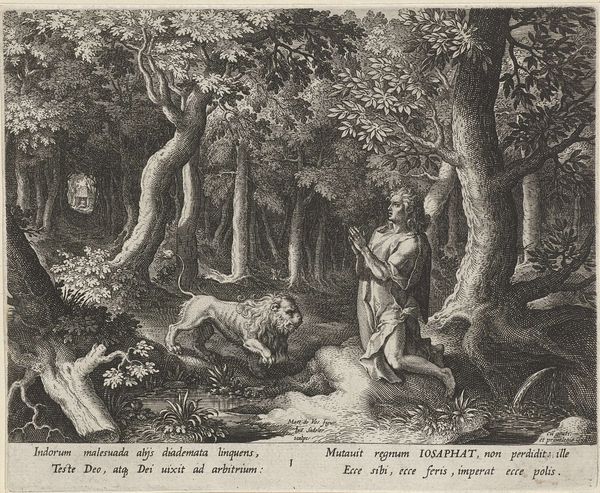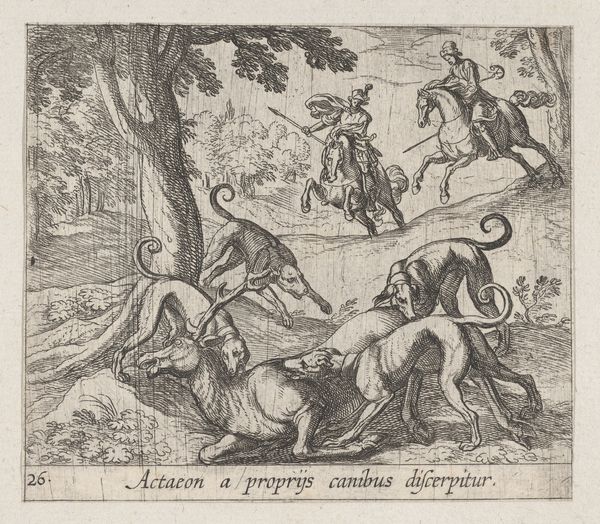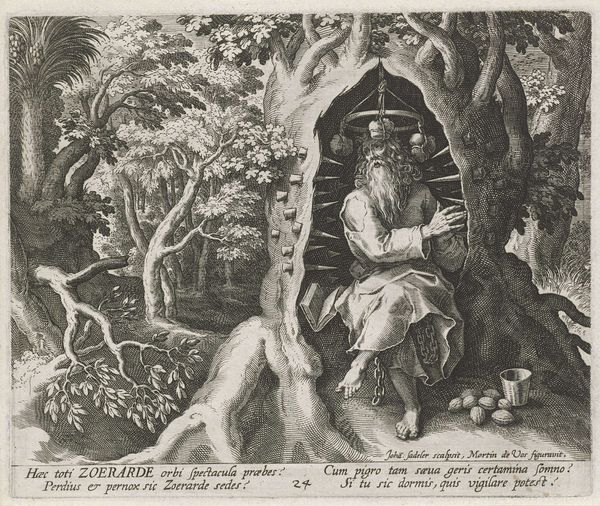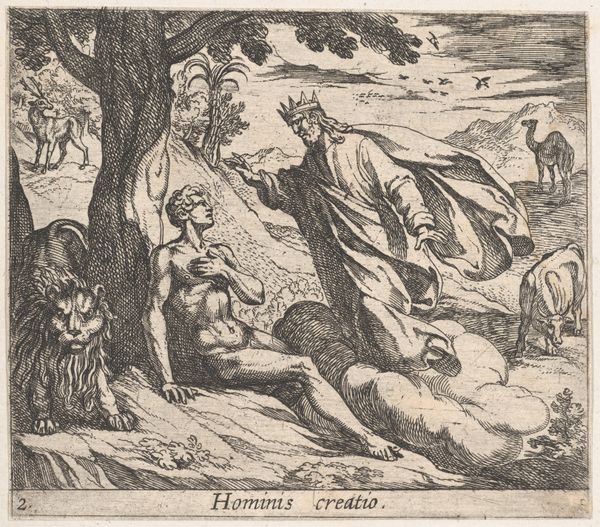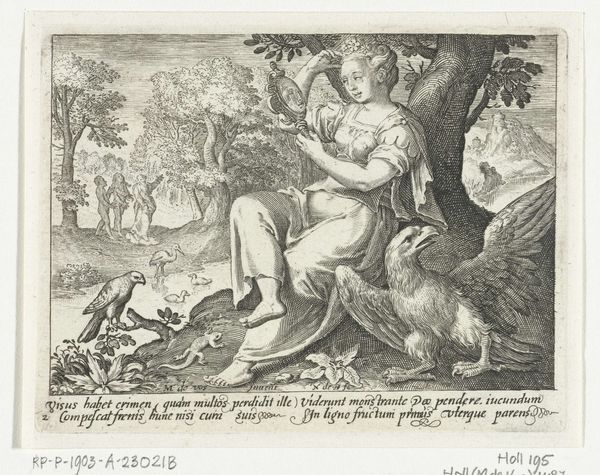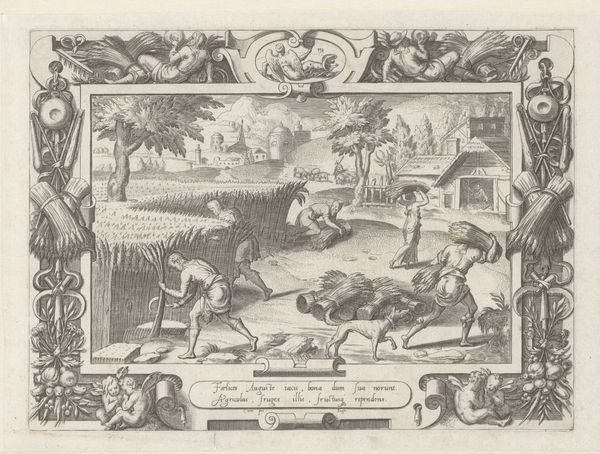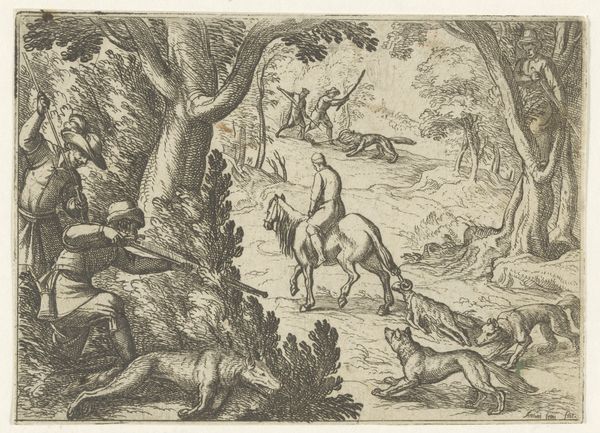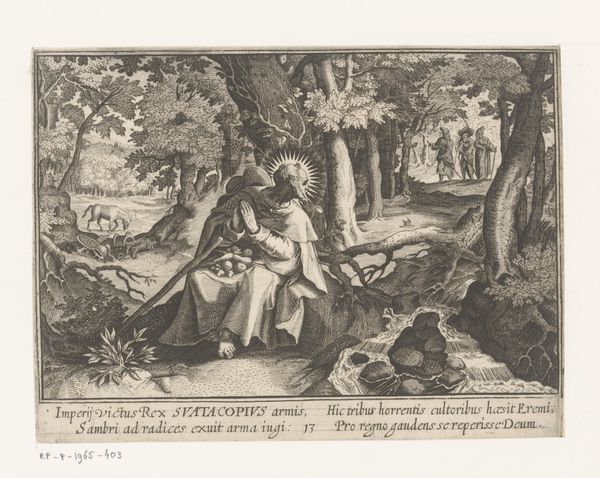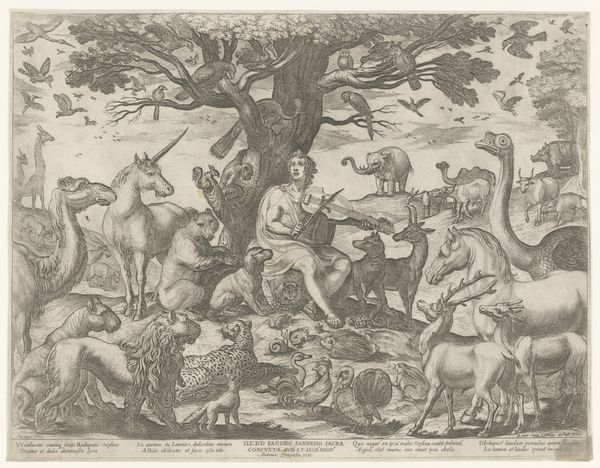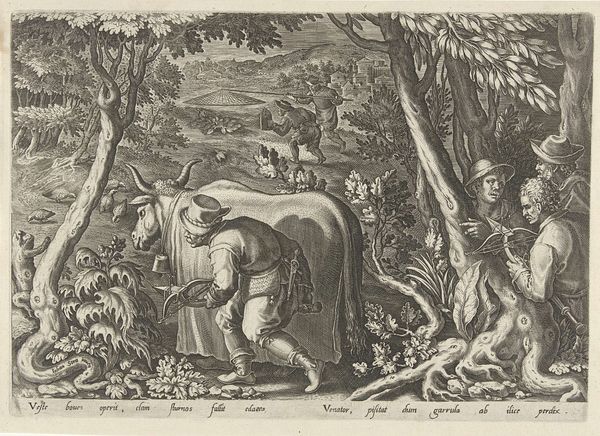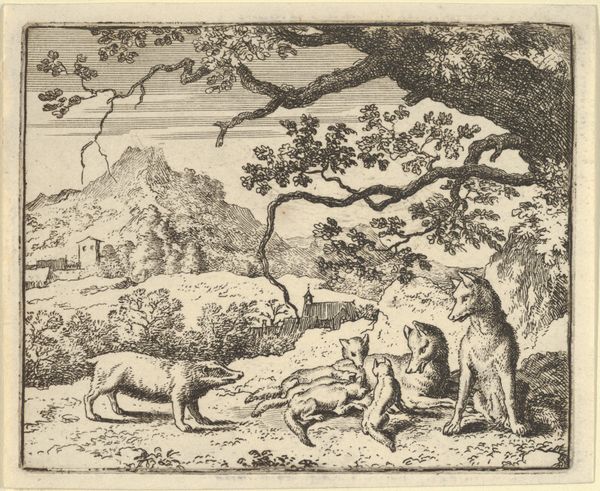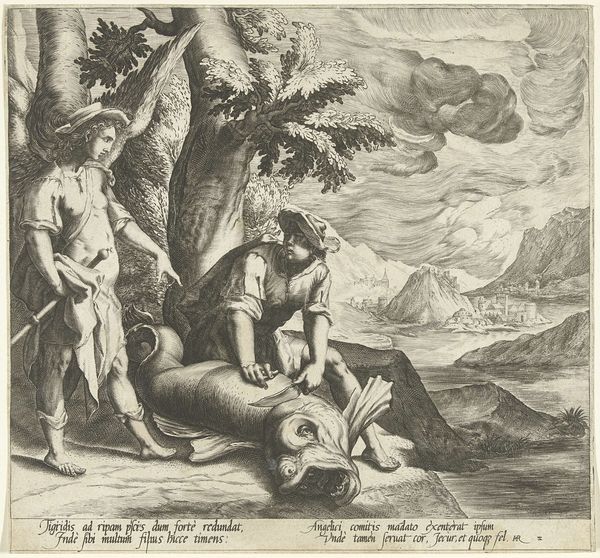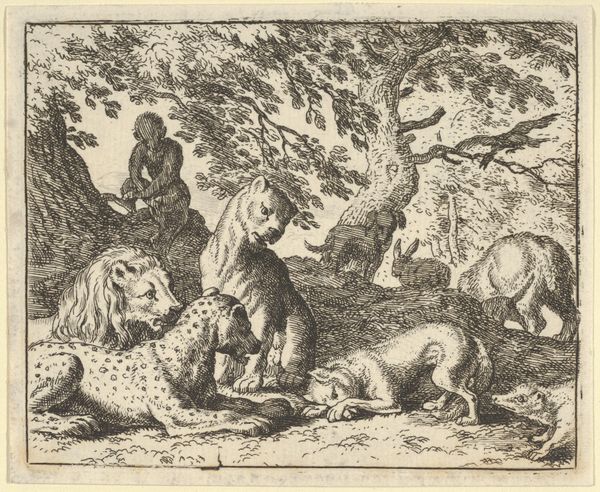
Plate 31: Thisbe Running from the Lionness at the Well (Thisbe leaenae spectu territa fugit), from Ovid's 'Metamorphoses' 1606
0:00
0:00
drawing, print, engraving
#
drawing
#
baroque
# print
#
landscape
#
figuration
#
history-painting
#
engraving
Dimensions: sheet: 12 3/8 x 20 1/2 in. (31.4 x 52 cm) plate: 4 1/8 x 4 3/4 in. (10.5 x 12 cm)
Copyright: Public Domain
Curator: Today, we're looking at Antonio Tempesta's engraving, "Thisbe Running from the Lionness at the Well," created in 1606 as part of an illustrated edition of Ovid's "Metamorphoses." Editor: The raw, stark black and white hits me first. You feel the drama of the scene instantly, even if you didn’t know the story. The texture of the engraved lines creates this vibrant nervous energy across the print. Curator: Tempesta masterfully uses those lines to build depth and emotion. The lioness, the fountain with the statue, and fleeing Thisbe herself each hold potent symbolic meaning within the larger narrative of love, danger, and tragic misidentification. The lioness especially represents untamed desire. Editor: Look at how the different line weights define each object. He’s creating so much detail with what appear to be quite basic, even primitive means of production. The material constraints amplify the sense of drama, actually. You can feel the labor behind the cross-hatching, creating light and shadow with repetitive mark-making. Curator: And it’s precisely in the repeated imagery across many editions of Ovid that we see the myth etched—pun intended—into the collective consciousness. Tempesta, with his precise symbolism and visual drama, perpetuates the classical ideals of the Baroque. Editor: The print medium itself is key. Reproducibility meant accessibility. So this wasn’t an isolated “masterpiece”, but an image meant for circulation, informing wider artistic production through the materials of printmaking and papermaking. Consider also that its social context—the development of print media alongside flourishing European cities – drove demand for this very image. Curator: Absolutely. And even now, separated by centuries, the drama in this single plate speaks clearly to the enduring themes of human emotion and fate as shaped and foreshadowed through animal symbolism, particularly here, with such an aggressive predator on display. Editor: For me, the compelling part lies in examining the socio-economic contexts shaping the print's very materiality: how prints disseminated knowledge, influencing the broader cultural landscape and even dictating our understanding of "high" and "low" art today. It’s right there in the texture.
Comments
No comments
Be the first to comment and join the conversation on the ultimate creative platform.
